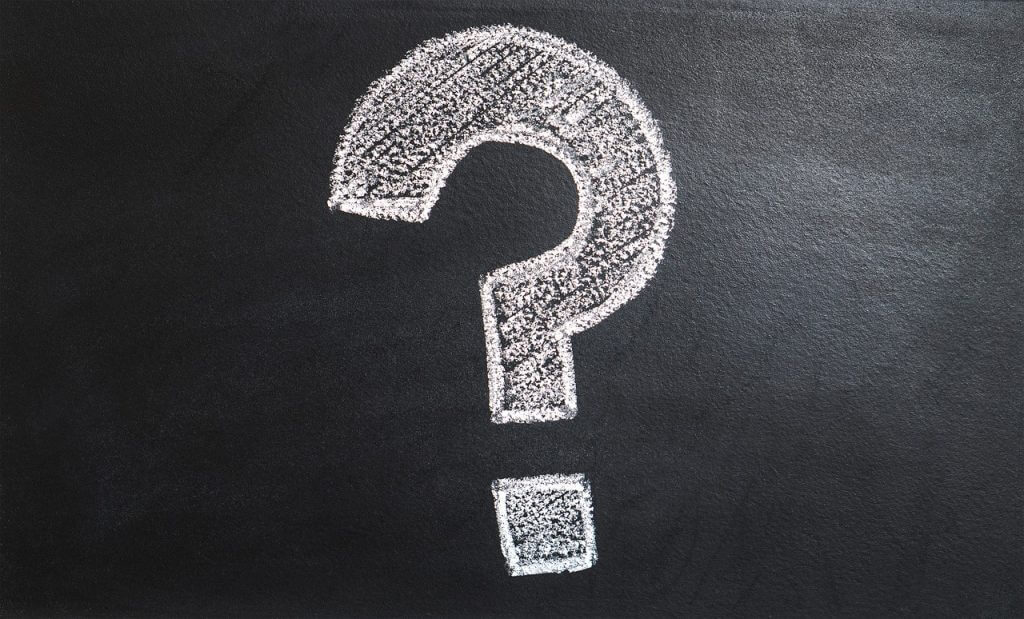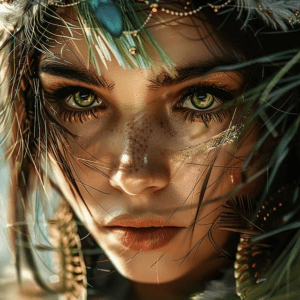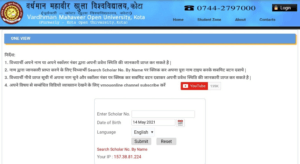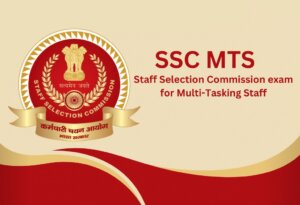List of 100 Important GK questions about Indian History for SSC UPSC and other important jobs.
Most Important 100 GK Questions with Answer

1. Sea route to India was discovered by
A. Columbus
B. Amundsen
C. Vasco–da–gama
D. None of these
Answer:C
2. The Aryans came from Central Asia to India around
A. 8000
B. 6500 B.C
C. 3500 B.C.
D. 2500 B.C.
Answer:D
3. Which one of the following was the port city of the Indus Valley Civilisation?
A. Harappa
B. Kalibangan
C. Lothal
D. Mohenjodara
Answer:C
4. Rig Veda is believed by the historians to have been written when it was
A. Stone Age
B. Copper Age
C. Bronze Age
D. Beginning of Iron Age
Answer:D
5. Babar entered India for the first time through
A. Sind
B. Punjab
C. Kashmir
D. Rajasthan
Answer:B
6. Who said that there was no Slavery in India?
A. Fahien
B. Strabo
C. Heiun Tsang
D. Megasthenese
Answer:D
7. Mahabharata war took place in
A. 500 AD
B. 900 BC
C. 1000 BC
D. 1200 BC
Answer:B
8. The magnificient temple at Halebid was established by
A. Cholas
B. Pandyas
C. Hosysalas
D. Naickers
Answer:C
9. India derives its name from
A. The Hindus
B. The Aryans
C. Lord Indra
D. The River Indus
Answer:D
10. A national religion called Din–i–Illahi was promulgated by
A. Akbar
B. Babur
C. Humayun
D. Aurangazeb
Answer:A
11. Who introduced English in India?
A. Lord Rippon
B. Lord Dalhousie
C. Lord Canning
D. Lord William Bentick
Answer:D
12. The foundation for the Vijayanagar city and kingdom was laid by
A. Sadasiva Raya
B. Krishnadevaraya
C. Rama Raya
D. Harihara and Bukka
Answer:D
13. The quit India movement was started in the year
A. 1942
B. 1945
C. 1943
D. 1939
Answer:A
14. A council of Eight Ministers known as the Ashta Paradhan assisted?
A. Sher Shah
B. Balaji Baji Rao
C. Shivaji
D. Ahmad Shah Abdali
Answer:C
15. Lord Buddha made his first sermon at
A. Sarnath
B. Pataliputra
C. Kapilavasthu
D. Lumbini Gardens
Answer:A
16. Taj Mahal is on the banks of
A. Tapti
B. Ganges
C. Jamuna
D. Cauvery
Answer:C
17. Panipat is modern
A. Delhi
B. Kurukshetra
C. Sonepat
D. Faridabad
Answer:B
18. Indian Napoleon was
A. Chandra Gupta I
B. Samudra Gupta
C. Skanda Gupta
D. Chandra Gupta
Answer:B
19. Kanishka followed
A. Jainism
B. Sikhism
C. Hinduism
D. Buddhism
Answer:D
20. The Mughal Empire reached its zenith of expansion under
A. Akbar
B. Humayun
C. Aurangazeb
D. Shahjehan
Answer:C
21. Do or Die slogan is associated with
A. Mahatma Gandhi
B. Bala Gangadhara Tilak
C. Jawaharlal Nehru
D. Nethaji
Answer:A
22. Who established the Mughal Dynasty?
A. Akbar
B. Babur
C. Humayun
D. Bahadur Shah
Answer:B
23. The Indian National Congress was founded by
A. Mahatma Gandhi
B. Annie Besant
C. W.C.Bannerji
D. A.O.Hume
Answer:D
24. The Civil services in India was established by
A. Lord Rippon
B. Lord Dalhousie
C. Lord William Bentick
D. Lord Cornwallis
Answer:A
25. The founder of Portuguese power in India was
A. Danes
B. Salsette
C. Albuquerque
D. Vasco–da–gama
Answer:C
26. Whose teachings inspired the French Revolution?
A. Locke
B. Plato
C. Rousseau
D. Hegel
Answer:C
27. The well known king of slave dynasty was
A. Alaudhin
B. Balban
C. Mahmud Lodi
D. Muhamad–bin–Tughlaq
Answer:B
28. The famous king of the Kushana dynasty was
A. Pushya
B. Kanishka
C. Harisha Vardhana
D. Kuvishka
Answer:B
29. In 1498, vasco da gama landed at
A. Delhi
B. Nalanda
C. Calcutta
D. Calicut
Answer:D
30. Indus valley civilization might have been destroyed by
A. Mughals
B. Aryans
C. Mongols
D. Dravidians
Answer:B
21. Do or Die slogan is associated with
A. Mahatma Gandhi
B. Bala Gangadhara Tilak
C. Jawaharlal Nehru
D. Nethaji
Answer:A
22. Who established the Mughal Dynasty?
A. Akbar
B. Babur
C. Humayun
D. Bahadur Shah
Answer:B
23. The Indian National Congress was founded by
A. Mahatma Gandhi
B. Annie Besant
C. W.C.Bannerji
D. A.O.Hume
Answer:D
24. The Civil services in India was established by
A. Lord Rippon
B. Lord Dalhousie
C. Lord William Bentick
D. Lord Cornwallis
Answer:A
25. The founder of Portuguese power in India was
A. Danes
B. Salsette
C. Albuquerque
D. Vasco–da–gama
Answer:C
26. Whose teachings inspired the French Revolution?
A. Locke
B. Plato
C. Rousseau
D. Hegel
Answer:C
27. The well known king of slave dynasty was
A. Alaudhin
B. Balban
C. Mahmud Lodi
D. Muhamad–bin–Tughlaq
Answer:B
28. The famous king of the Kushana dynasty was
A. Pushya
B. Kanishka
C. Harisha Vardhana
D. Kuvishka
Answer:B
29. In 1498, vasco da gama landed at
A. Delhi
B. Nalanda
C. Calcutta
D. Calicut
Answer:D
30. Indus valley civilization might have been destroyed by
A. Mughals
B. Aryans
C. Mongols
D. Dravidians
Answer:B
31. The Indus Valley houses were built of
A. Bamboos
B. Wood
C. Bricks
D. Stone
Answer:C
32. The French made their advent through
A. Mahe
B. Yenam
C. Karaikal
D. Pondicherry
Answer:D
33. The last Mughal Emperor was
A. Akbar
B. Babur
C. Bahadur Shah
D. Noor Jehan
Answer:C
34. The first wave of Aryan immigration into India began in
A. 500 BC
B. 1000 BC
C. 1500 BC
D. 1000 A.D.
Answer:C
35. Aryans lived in
A. Maharashtra
B. South India
C. Central India
D. Gangetic Valley
Answer:D
36. The brain trust of Chandra Gupta Maurya was
A. Fahien
B. Megasthanes
C. Nandagopala
D. Kautilya
Answer:D
37. The musical instruments used by the Aryans was
A. The Drum
B. The Lute
C. The cymbal
D. All the above
Answer:D
38. Chanakya was known as
A. Rajasekhara
B. Bhattasvamin
C. Vishnugupta
D. Visakhadatta
Answer:C
39. The first to start a joint stock company to trade with India were the
A. French
B. Dutch
C. Portuguese
D. Danish
Answer:B
40. The capital of the kingdom of Maharaja Ranjit Singh was
A. Lahore
B. Amrister
C. Patiala
D. Amristar
Answer:A
41. In the Battle of Wandiwash, the English defeated
A. the Dutch
B. the French
C. the Portuguese
D. None of these
Answer:B
42. Indian Navy Act was passed on
A. 1921
B. 1925
C. 1927
D. 1930
Answer:C
43. The first president of the Republic of India was
A. V.V.Giri
B. Zakir Hussain
C. Dr.Radhakrishnan
D. Dr.Rajendra Prasad
Answer:D
44. The first ruler of Pala dynasty was
A. Gopala
B. Dharmapala
C. Bhaskaravarman
D. None of these
Answer:A
45. The first to establish regular trade with India was
A. Dutch
B. Portuguese
C. French
D. English
Answer:B
46. The king of Kalinga in the Maurya period was
A. Simuka
B. Kharavela
C. Kuvishka
D. Kanishka
Answer:B
47. Sea route in India was discovered by
A. Columbus
B. Amundsen
C. Vasco–da–gama
D. None of these
Answer:C
48. The treaty of Seringapatnam was between Cornwallis and
A. Haider Ali
B. Chand Bibi
C. Tipu Sultan
D. Nizam of Hyderabad
Answer:C
49. Ashoka conquered Kalinga in the year
A. 231 AD
B. 127 AD
C. 261 BC
D. 327 BC
Answer:C
50. Chand Bibi was the ruler of
A. Satara
B. Bijapur
C. Golconda
D. Ahmednagar
Answer:D
51. Rice cultivation is associated with the Harappan site of
A. Kalibangan
B. Harappa
C. Lothal
D. Mohenjodaro
Answer : C.
52. The Mauryan dynasty was overthrown by
A. Kanishka
B. Harsha
C. Samudragupta
D. Pushyamitra Sunga
Answer : D.
53. Who among the following was not an exponent of Bhakti movement?
A. Shankaracharya
B. Nanak
C. Ramanada
D. Kabir
Answer : A.
54. The Bhakti Movement was first organized by
A. Nanak
B. Kabir
C. Ramanuja
D. Ramananda
Answer : C.
55. An example of Chola architecture cab be seen at
A. Kanchipuram
B. Mahabalipuram
C. Tanjore
D. Ellora
Answer : C.
56. Panchantra was written by
A. Kaladisa
B. Vishnu Sharma
C. Tulsidas
D. Banabhatta
Answer : B.
57. Decimal system was introduced by
A. Aryabhatta
B. Brahmagupta
C. Bhaskara
D. None of these
Answer : C.
58. Who is known as the “Napoleon of India”?
A. Samudragupta
B. Akbar
C. Chandragupta
D. Ashoka
Answer : A.
59. Who was the founder of the Gupta dynasty?
A. Chandragupta I
B. Chandragupta II
C. Samudragupta
D. Skandgupta
Answer : A.
60. Who was the greatest Buddhist commentator of the Buddhist canonical literature?
A. Euddhaghosha
B. Vasumitra
C. Nagaijuna
D. Ashvaghosha
Answer : D.
61. The stone Age people had the first domestic
A. Asses
B. Dogs
C. Horses
D. Sheep
Answer : D.
62. The Government invention of man in Palaeolithic Age was
A. potter’s Wheel
B. Fire
C. metal implements
D. spinning of cloth
Answer : B.
63. Which was the first metal used by man?
A. Copper
B. Silver
C. Bronze
D. Brass
Answer : A.
64. Which of the following Vedas is a collection of spells and incantations?
A. Rig Veda
B. Sama Veda
C. Yajur Veda
D. Atharva Veda
Answer : D.
65. At which place was Akbar born?
A. Delhi
B. Agra
C. Amarkot
D. Kannauj
Answer : C.
66. In which language were the Sangam classics written?
A. Tamil
B. Telugu
C. Kannada
D. Malayalam
Answer : A.
67. Which one of the following divinity of Rigveda?
A. Marut
B. Agni
C. Shakti
D. Varuna
Answer : D.
68. The Indus valley civilization flourished during
A. 5000 – 3500
B. 3000 – 1500 B.C
C. 2500 – 1750 B.C
D. 1500 – 500 B.C
Answer : C.
69. The Indus valley civilization was discovered in
A. 1902
B. 1921
C. 1922
D. 1932
Answer : B.
70. The main occupation of the people of the Indus valley civilization was
A. agriculture
B. cattle rearing
C. hunting
D. trade
Answer : A.
71. Which one of the following Harappan sites had a dock?
A. Harappa
B. Mohenjodaro
C. Lothal
D. Alamgirpur
Answer : C.
72. Which one of the following contains the Gayatri Mantra?
A. Rigveda
B. Yajurveda
C. Upanishad
D. Samaveda
Answer : A.
73. The extreme form of Ahimsa or non violence is practiced in
A. Jainism
B. Hinduism
C. Buddhism
D. Sikhism
Answer : C.
74. The Aryans at first settled in
A. Gujarat
B. Punjab
C. Sindh
D. Kashmir
Answer : B.
75. Rabi crops of the Indus Valley are
A. Rice and wheat
B. Wheat and cotton
C. Barley and rice
D. Wheat and Barley
Answer : D
76. The famous temple of Kailasa, hewn out of the rock, is at
A. Ellora
B. Badami
C. Mahabalipuram
D. Elephanta
Answer : A.
77. The Aryans came to India from
A. South East Asia
B. Eastern Europe
C. Central Asia
D. None of the above
Answer : C.
78. The earliest example of a land grant is provided by an inscription
A. the guptas
B. the mauryas
C. the satavahanas
D. the mahameghavahanas
Answer : C.
79. Alexander died at
A. Patala
B. Taxila
C. Babylon
D. Gedrosia
Answer : C.
80. The Gandhi Mandapam where Gandhiji’s ashes were placed before immersion is in
A. Kanyakumari
B. Gandhinagar
C. Ahmedabad
D. Ganga
Answer : A.
81. Everyone knows ‘The Taj Mahal’. It was built by the Emperor Shah Jahan, but for
whom?
A. Jahani Mahal
B. Farida Mahal
C. Mumtaz Mahal
D. Toba Begum
Answer : C.
82. Who introduced the system of Local boards or Local Bodies in India?
A. Lord Lytton
B. Lord Ripon
C. Lord Curzon
D. Lord Mayo
Answer : B.
83. Which of the following Harappan sites had a dock?
A. Lothal
B. Harappa
C. Alamgirpur
D. Mohenjodaro
Answer : A.
84. The Indus Valley Civilization belongs to the
A. Palaeolithic Age
B. Mesolithic Age
C. Neolithic Age
D. Chalcolithic Age
Answer : C.
85. The family of the Rig Vedic Aryans was
A. Matriarchal
B. Matrilineal
C. Patrilineal
D. Patriarchal
Answer : D
86. The fourth Buddhist Council was held by
A. Chandragupta
B. Ashoka
C. Harashavardhana
D. Kanishka
Answer : D.
87. The fourth Buddhist Council was held at
A. Rajagriha
B. Vaishali
C. Kundalavana
D. Patliputra
Answer : C.
88. The first to establish regular trade with India was
A. Dutch
B. English
C. Portugese
D. French
Answer : C.
89. The Widow Remarriage Act was passed by
A. Lord Wavell
B. Lord Canning
C. Lord Dalhousie
D. Lord Auckland
Answer : C.
90. Who introduced English in India?
A. Lord Canning
B. Lord Dalhousie
C. Lord Rippon
D. Lord William Bentick
Answer : D
91. The first Buddhist Council was held in the reign of
A. Ajatashatru
B. Ashoka
C. Kanishka
D. Bimbisara
Answer : A.
92. Lord Buddha was born in
A. Vaishali
B. Pataliputra
C. Lumbini
D. Bodh Gaya
Answer : C.
93. The largest grant of villages to temples and brahmana was given by the ruling
dynasty known as
A. The Palas
B. The Guptas
C. Pratiharas
D. Rashtrakutas
Answer : B.
94. The first ruler of Pala dynasty was
A. Dharmapala
B. Gopala
C. Bhaskaravarman
D. None of the above
Answer : B.
95. Adigranth is the religious book of
A. Parsis
B. Sikhs
C. Hindus
D. Buddhists
Answer : B.
96. The first President of the Republic of India was
A. V.V. Giri
B. Dr. Radhakrishnan
C. Dr. Rajendra Prasad
D. Zakir Hussain
Answer : C.
97. The French Revolution took place in the year
A. 1647
B. 1729
C. 1775
D. 1789
Answer : D.
98. Which metal was first used by the Indus people?
A. Gold
B. Silver
C. Tin
D. Carlinean
Answer : B.
99. Which of the following regions did not form the part of Ashoka’s empire?
A. Taxila
B. Kanauj
C. Kashmir
D. Madras
Answer : D.
100. The founder of the first Afghan rule in India was
A. Sikandar Lodi
B. Sher Shan Suri
C. Bahlul Lodi
D. Ibrahim Lodi
Answer : C.















